

We’ve come to expect the unexpected in the land of superlatives, but to be honest: Some places in the USA are odd! From ice mazes to creepy clown motels, we'll show you the most absurd landmarks and works of art across the United States!
The Neon Museum (also known as the Neon Cemetery) is the final resting place for the legendary neon signs of the gambling city of Las Vegas. The exhibits here date back to the 1930s, when the cityscape of the desert metropolis was already dominated by all kinds of glowing art pieces.
If you have the chance, go and see this bizarre place both by day and by night, as these are two very different experiences! The special "Brilliant!" show, which uses light projection and music to bring the old neon signs back to life, has brought many a visitor to tears!
The Neon Museum nonprofit organization was founded in 1996 because it was difficult for many locals to see the elaborately designed, artistic neon lights gradually being replaced by modern models.
Some of the world's most beautiful neon signs, such as the Hard Rock Café Guitar, the Silver Slipper, and the Hacienda Horse and Rider, would have simply disappeared if not for the team's dedication to collecting, restoring, and exhibiting iconic Las Vegas signs.
Antelope Canyon in Page, Arizona, is a fascinating labyrinth of sandstone whose winding passages and undulating structure are a photographer's dream and a traveler's wonder. The play of light and shadow at different times of day makes each visit unique.
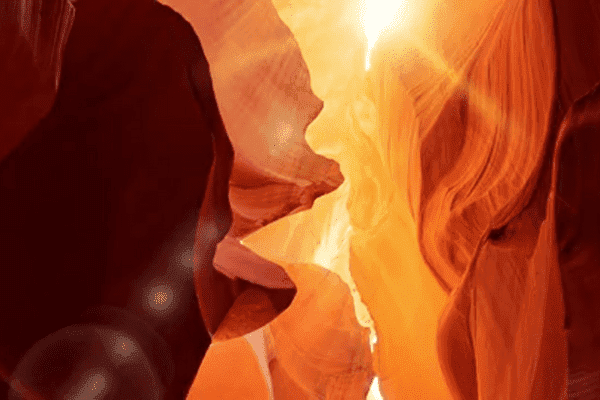
Antelope Canyon was formed by the erosion of the Navajo Sandstone. Over millions of years, rainwater flowed into the canyon, picking up velocity and sand as it flowed through the narrow passages. Over time, this process smoothed the canyon walls and formed the flowing shapes in the rock.
Historically, the canyon was and is a sacred place to the Navajo people, who called it "Tse' bighanilini," meaning "the place where the water flows through the rocks." Today, the canyon is not only a testament to the power of natural forces but also a symbol of the Navajo Nation's rich cultural heritage.
The colorful California Salvation Mountain in the Colorado Desert near Niland is a tribute to spiritual love and devotion. Every inch is covered with color, loving messages to God, and colorful artwork.
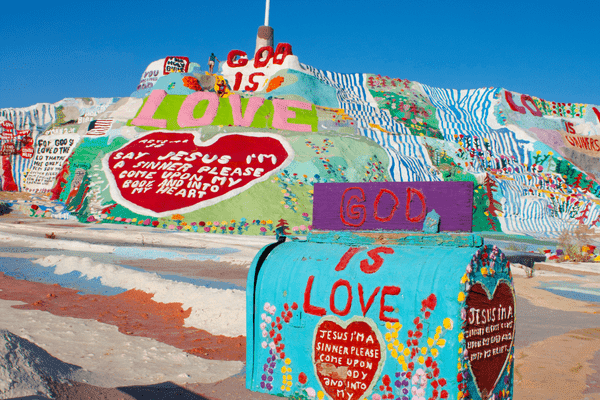
Salvation Mountain was created by Leonard Knight, who began the project in the 1980s. Using clay, straw, and thousands of gallons of paint, Knight created a hill about 15 m high and 46 m wide, decorated with religious messages and vivid biblical scenes.
Over the years, more sculptures and murals have been added, reflecting Knight's spiritual message. Today, Salvation Mountain is a testament to one man's commitment and vision that attracts visitors from around the world and has become a symbol of hope and love.
The Bonneville Salt Flats in Utah stretch over 300 km2 and offer a surreal landscape that feels quite out of this world. Among other things, the vast white expanse is famous for setting speed records.
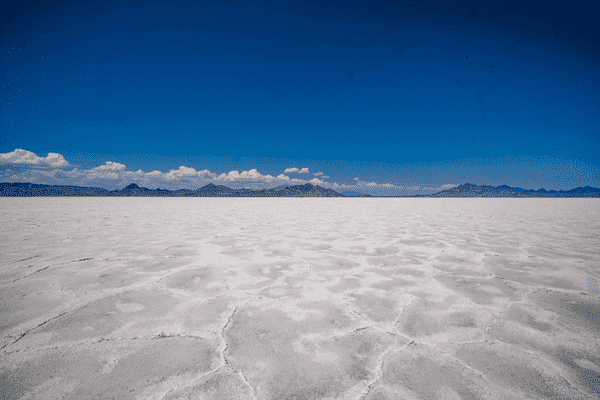
The Salt Flats are the remains of what was once Lake Bonneville, a prehistoric rainfall lake that once covered much of the Great Basin in North America. Over time, the lake dried up, leaving behind huge salt deposits that formed the unique and extensive salt flats we see today.
These flats have been shaped over thousands of years by varying water levels, precipitation, and evaporation cycles. Today, the Bonneville Salt Flats are not only a geological wonder but also an icon for motorsport fans who want to test the limits of speed.
Bubblegum Alley in San Luis Obispo, California, is a whimsical testament to human creativity, as the walls of the small alley are completely covered in gum. A sticky (and perhaps somewhat unsavory) attraction that invites you to leave your own mark!
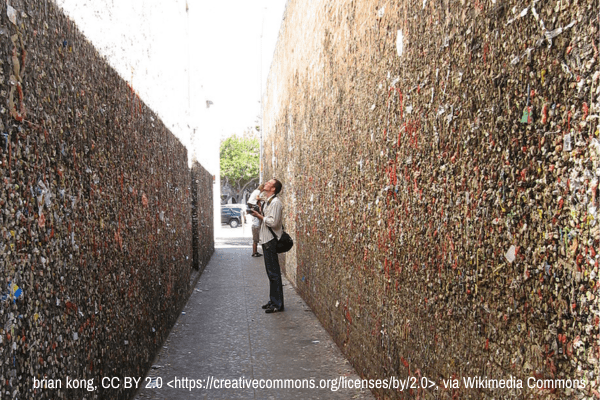
The origins of Bubblegum Alley are obscure, but the tradition of sticking gum on walls apparently dates back to the post-World War II era, around the 1940s or 1950s.
One of several legends has it that the chewing gum glue business began with a rivalry between students at San Luis Obispo High School and California Polytechnic State University. Over the decades, the alley has transformed into a colorful, sticky mosaic of salivated chewing gum.
The majestic Carlsbad Caverns in New Mexico are a network of underground chambers where stalactites and stalagmites have taken millions of years to form.
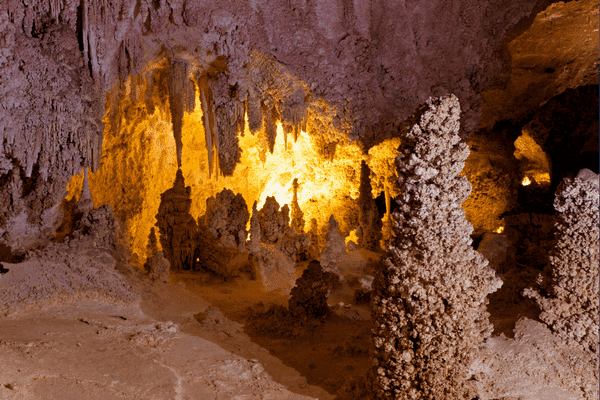
The Carlsbad Caverns were formed during the dissolution of limestone by sulfuric acid. The caverns were known to Native Americans long before they were discovered by Europeans, and there is evidence that they existed thousands of years ago.
In the late 19th and early 20th centuries, settlers were drawn to the caverns to mine bat guano for fertilizer. Carlsbad Caverns, declared a national monument in 1923 and a national park in 1930, still fascinates with its underground wonders.
Cadillac Ranch in Amarillo, Texas, is an iconic art installation featuring ten Cadillacs buried nose down in the ground. This pop culture monument invites you to spray paint the cars, creating an ever-changing work of art!
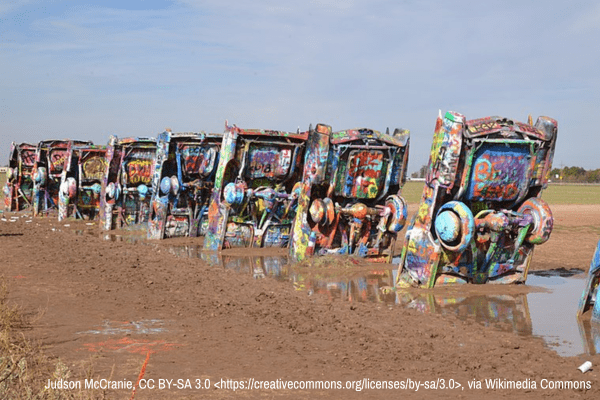
Cadillac Ranch was created in 1974 by the artist group Ant Farm, led by Chip Lord, Hudson Marquez, and Doug Michels. The artwork was originally intended to illustrate the rise and fall of the tail fin in automotive design but has since become a symbol of American pop culture.
Over the years, visitors have been encouraged to put their own stamp on the cars by spray-painting them, keeping the installation constantly in motion.
Speaking of car art: Carhenge in Alliance, Nebraska is a whimsical homage to England's Stonehenge and consists entirely of vintage cars painted gray.
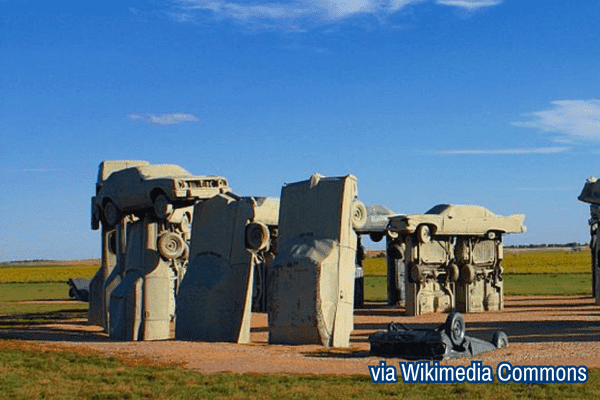
Carhenge was designed and realized in 1987 by quirky engineer Jim Reinders. The work of art consists of 39 vintage cars arranged in a circle that mimics the position of the stones of Stonehenge.
Reinders built Carhenge as a memorial to his father and as a playful commentary on American car and innovation culture. Over the years, the site has become a popular roadside attraction that draws visitors from around the world.
Driftwood Beach on Jekyll Island in Georgia is a hauntingly beautiful stretch of coastline dotted with old, weathered trees and driftwood. In addition to being a popular photo hotspot for tourists, the beach is also a testament to the ever-changing landscape of the Georgia coast.
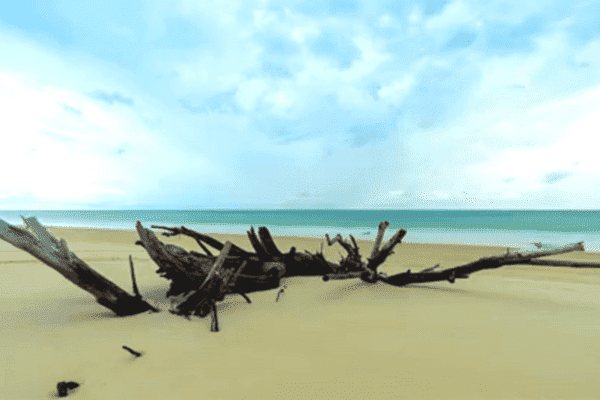
The unique appearance of Driftwood Beach is the result of decades of erosion, where the waves of the Atlantic Ocean have uprooted and eroded the island's coastal forest. Jekyll Island itself has a rich history, from its days as an exclusive retreat for the American elite in the late 19th and early 20th centuries to its current status as a state park.
The Clown Motel in Tonopah, Nevada, offers adventure seekers (non-coulrophobics) a stay like something out of a scary movie! Surrounded by a cemetery and filled with clown memorabilia, the motel is a unique blend of horror and fascination.
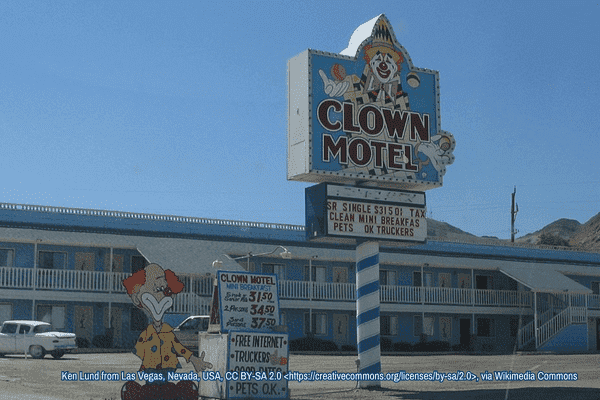
The Clown Motel was established in the 1980s and quickly gained notoriety for its clown decor and its location at the old Tonopah Old Cemetery dating back to the early 1900s.
This combination earned the motel a reputation as one of the scariest motels in America. Today, it remains a popular attraction and is a testament to America's love of the bizarre and offbeat.
The Grand Prismatic Spring in Yellowstone National Park is the largest hot spring in the USA and offers a dazzling display of nature's colors. The rainbow-colored water is a fascinating sight from every angle!
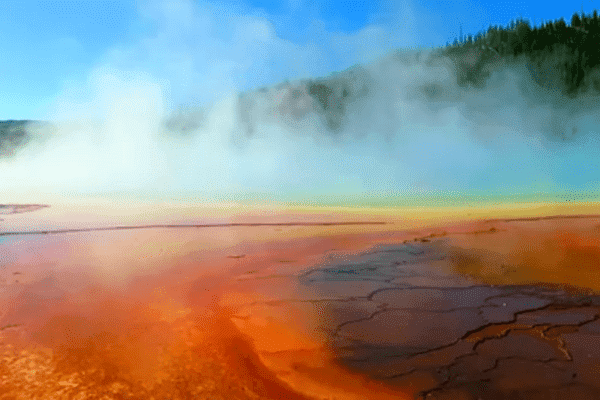
The warm water of the Grand Prismatic Spring comes from the underground magma chamber of the Yellowstone supervolcano. The bright colors, ranging from a deep blue in the center to bright orange, yellow, and green at the edges, are the result of microbial mats and varying temperatures.
The Native Americans knew about the spring long before its discovery by Europeans in the late 19th century. Even today, the Grand Prismatic Spring is one of the most famous and photographed sights in Yellowstone National Park.
Known as the "Stairway to Heaven," the Haiku Staircase on Oahu in Hawaii offers a challenging (or rather breakneck?) climb that is rewarded with a breathtaking panoramic view. Here you need stamina and strong nerves!
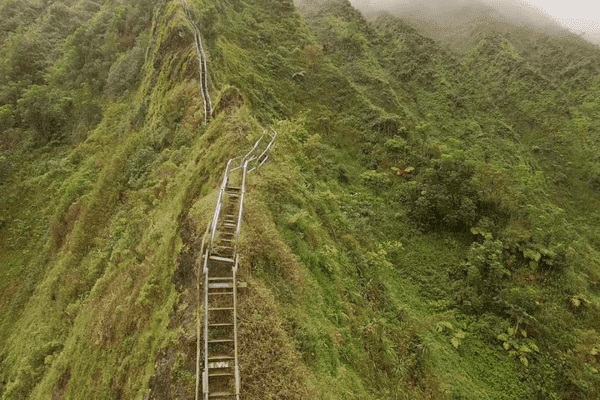
The Haiku Staircase consists of nearly 4,000 steps leading up the Ko'olau mountain range. Originally, the path was built during World War II to allow the military access to a top-secret radio station that transmitted signals to naval ships operating in the Pacific.
In the 1950s, the wooden steps were replaced with metal steps, and over the years, the stairs became an unofficial hiking trail that offers great panoramic views of the Windward Side of Oahu.
Unfortunately, the trail has been closed to the public since 1987 for safety reasons. Hikers risk trespassing charges if they enter the stairs. Do you still want to go for it?
The Mendenhall Glacier Caves in Alaska are a natural wonder inside the Mendenhall Glacier near Juneau. Here you can immerse yourself in a world of blue ice and listen to the whispers of a retreating glacier.
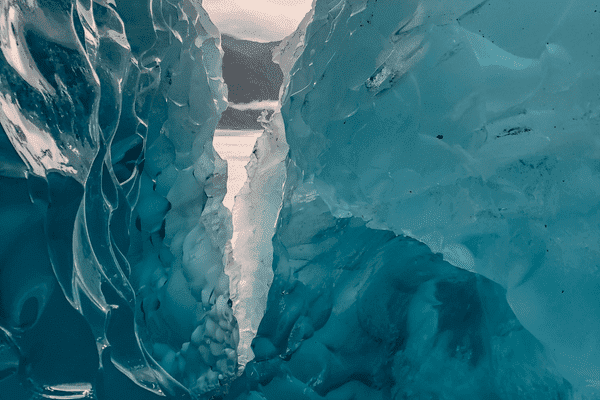
The Mendenhall Glacier, which is over 20 kilometers long, has receded considerably in the last century. The beautiful caves were formed by the meltwater flowing under the glacier, creating fascinating blue chambers and tunnels. Unfortunately, this is why the Mendenhall Glacier Caves are a fleeting beauty that changes along with the climate. Today, the caves are not only a breathtaking experience but also a poignant reminder of impermanence in the face of global warming.
Are you ready for the craziest USA trip of your life? Then quickly check if your ESTA is still valid, book a flight to your dream destination in the USA, and off you go!
Here are a few more tips for your travel preparation:
With an ESTA, you can stay 90 days visa-free in the USA. Apply online now!